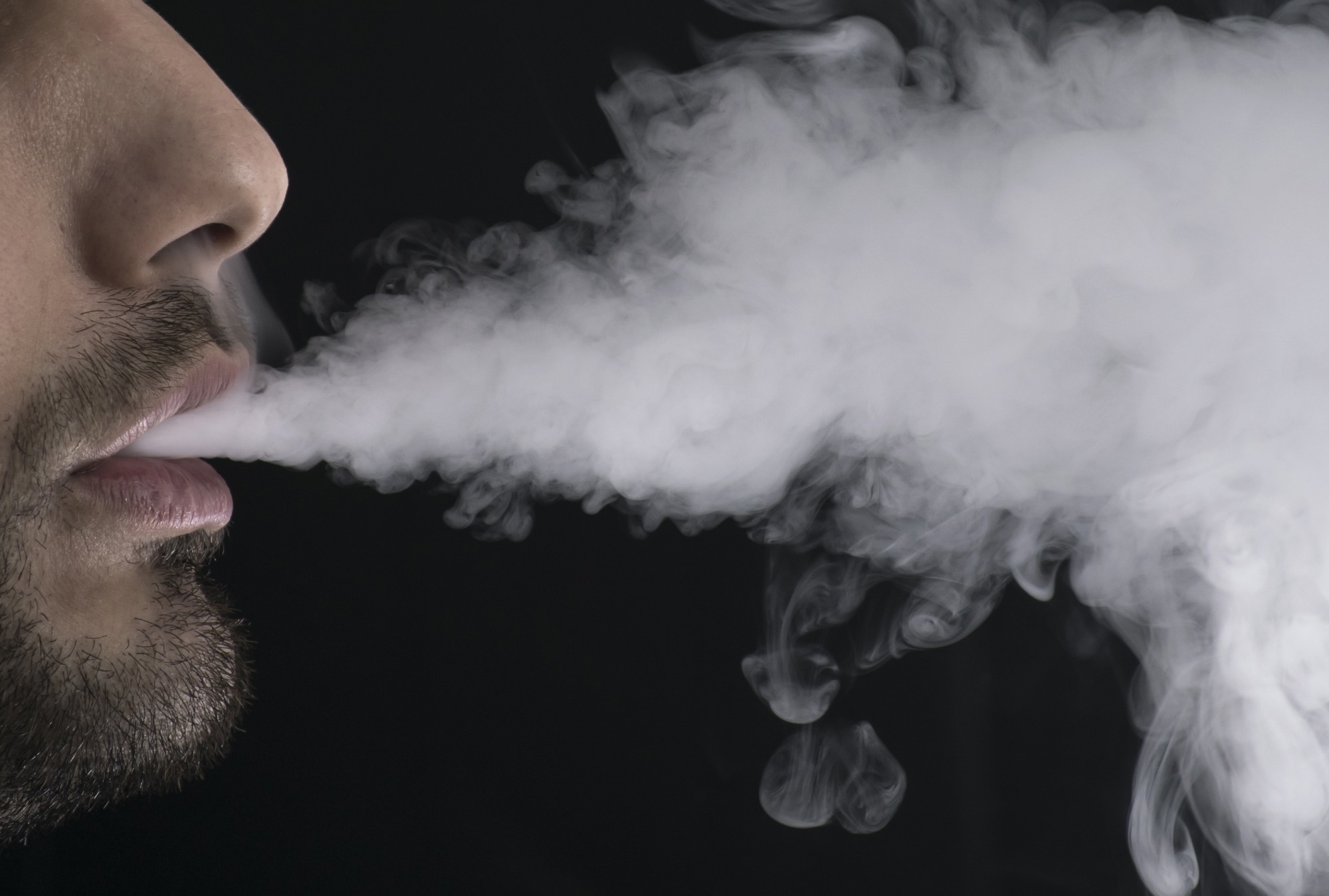The impact of conventional tobacco smoking on coronary artery disorder is well understood. However, the effects of smoking on proarrhythmic mechanisms and cardiac arrhythmia need further research. Modern tobacco products like electronic cigarettes (e-cigs) and heated tobacco products (HTPs) and the rise in the popularity of legalized marijuana have complicated the situation. These products are popularly considered safer than tobacco cigarettes. However, even though non-traditional tobacco products and marijuana may be a novel threat to the cardiovascular system, there is little understanding of the impact of smoking or vaping on cardiac arrhythmias.
 Study: Increased vulnerability to atrial and ventricular arrhythmias caused by different types of inhaled tobacco or marijuana products. Image Credit: Hazem.m.kamal / Shutterstock
Study: Increased vulnerability to atrial and ventricular arrhythmias caused by different types of inhaled tobacco or marijuana products. Image Credit: Hazem.m.kamal / Shutterstock
About the study
In the present study, researchers determined whether using new types of tobacco or marijuana can lead to a proarrhythmic substrate, eventually resulting in arrhythmias.
For this study, male and female Sprague-Dawley rats aged between eight to 10 weeks were used and divided into groups of five to 16. In order to mimic active smoking or vaping observed in humans, conscious rats were exposed to pulsatile aerosol or smoke. Each rat underwent exposure five days per week for two months with one session per day. Each of these sessions consisted of 10 cycles performed over five minutes to estimate the consumption of one vaping session or a cigarette. Two of the 18 animals in the tobacco cigarette group at the beginning of the study died on days 1 and 14. They were replaced, and no other animals died. Rats were exposed to either electronic cigarettes (JUUL), HTPs (IQOS), Marlboro Red cigarettes (CIG), marijuana (MJ), or placebo marijuana (pb-MJ).
The team measured arrhythmia inducibility testing, electrocardiographic telemetry, echocardiography, systolic blood pressure (SBP), and optical mapping during or after exposure. To identify progressively chronic effects, a tail cuff was used to measure conscious SBP on the first day of exposure and at the end of the second, fourth, sixth, and eighth weeks. On each day of measurement, SBP was estimated twice, once each before and after the single exposure on that day, to estimate that day's acute effect.
The team also performed ex vivo heart optical mapping eight weeks after exposure to measure the heart's susceptibility to arrhythmias from the right and left ventricles and atria and determine their electrophysiological characteristics. The length of an action potential at 80% repolarization (APD80) and a calcium transient at 80% repolarization (CATD80) were measured.
Results
The study findings showed that all non-air conditions drastically changed SBP. Cigarette smoke, IQOS aerosol, and JUUL aerosol all had the same effect on SBP: they all increased SBP significantly on the first day of exposure, with moderate enhancements in the following days. However, unlike tobacco products, each acute exposure to marijuana lowered SBP. On the other hand, pb-MJ did not reduce SBP but increased it in a manner similar to tobacco products.
Pre-exposure values showed that chronic exposure to the assessed products gradually raised baseline SBP from 0.130 mm Hg after two weeks of exposure to 0.140 mm Hg after four weeks and 0.150 mm Hg after eight weeks of exposure. Norepinephrine concentrations in the serum samples were considerably different in rats exposed to marijuana or tobacco products compared to air eight weeks after exposure. At the same time, angiotensin levels did not show any variation.
After eight weeks of exposure, fractional area variations and ejection fraction in all non-air cohorts were lower than they were at baseline. In non-air groups, the left ventricular (LV) end-diastolic and LV end-systolic volumes gradually increased. By eight weeks after exposure, the LV end-diastolic and LV end-systolic volumes had increased significantly compared to baseline in all non-air groups. Additionally, LV mass also increased compared to air cohorts and baseline. Also, exposure to all conditions except air caused the left atrial (LA) diameter to enlarge by the fourth week of exposure, with enlargement continuing until the eighth week. These results suggested that using tobacco and marijuana caused LV dysfunction with enlargement of cardiac chambers. This indicated that smoking and vaping are linked to LV dysfunction and remodeling.
When compared to air, all tobacco products facilitated overall AF induction. Overall, 37.5% of rats exposed to MJ and 50% of rats exposed to pb-MJ developed AF. However, rats exposed to air did not develop AF. VT-inducible rate due to exposure to air was 0%, CIG was 62.5%, JUUL was 71.43%, IQOS was 37.5%, MJ was 75%, and pb-MJ was 37.5%. AF rates were significant for only CIG, JUUL, and MJ. More than half of all cases of tachycardia were caused by overdrive pacing. The LA, LV, and right atrium (RA) effective refractory periods (ERPs) were shorter in the non-air groups. Furthermore, non-air cohorts had shorter APD80 with longer CATD80 as compared to air-control groups at different pacing cycle lengths.
Overall, the study findings showed that marijuana and tobacco could cause changes in the heart's structural, electrical, and neural remodeling, facilitating the occurrence of arrhythmias.
Journal reference:
- Huiliang Qiu, Hao Zhang, Daniel D. Han, Ronak Derakhshandeh, Xiaoyin Wang, Natasha Goyal, Mina Navabzadeh, Poonam Rao, Emily E. Wilson, Leila Mohammadi, Jeffrey E. Olgin, Matthew L. Springer, Increased vulnerability to atrial and ventricular arrhythmias caused by different types of inhaled tobacco or marijuana products, Heart Rhythm, 2022, ISSN 1547-5271, DOI: https://doi.org/10.1016/j.hrthm.2022.09.021, https://www.sciencedirect.com/science/article/pii/S1547527122024869